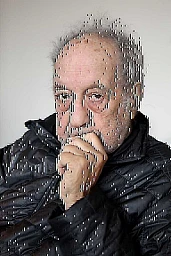The cult and culture of Robert Frank (People 2012, by Robert Frank) - Swiss Press Award

Robert Frank
In 1955, when 31-year-old Robert Frank, equipped with a Guggenheim grant, set forth for his large-scale reportage across the United States, no one had any inkling of the impending fame. It came with the publication of »The Americans” in bookform in 1959. Introduction by Jack Kerouac. On the road, both of them. Frank set forth from New York to Maine with Walker Evans and then on his own to Detroit, Washington, Florida, Houston. The prolonging of the grant allows him to travel to California, Pennsylvania, Chicago. The reporter has grown into a photographic essayist of America’s society, the beautifully trained photographer, born in 1924 in Zurich, has become an artist. A look back shows him ensconced between the two strands that still characterized Swiss photography in the 1940s, on one hand Kübler and his crew of reporters, on the other Finsler and his »Grundschule des Sehens”. Early on, Frank found his own distinctive position, feeling suspicious about assignment works and profiling himself as an author as early as 1946. The first contact sheets of his formidable body of work already identified him as a documentarist: AlbisgüetliChilbi and 1st of May demonstration, Zurich, 1945. »Camera” and »DU” magazines published single pictures, but it was symptomatic – and a godsend – that he was not allowed to join Magnum. As a photographer of the casual and normal, he willingly shuns major events. He distrusts the exterior glow, and the haziness often met in his pictures completely expresses his interior, poetic agitation as his reportage from London and Paris, Peru and Spain show. This look, that remains open today and has produced an amazing photographic output during the second part of his life, one that goes beyond the mere surface, offers us a subjective chronicle of being in the world that is aimed at one thing: the truth.
